VISUAL ART



Rollright Visual Art Group
Winter Meeting
22 February 2020
10:00 - 16:00
Village Hall, High Street, Long Compton, Warks, United Kingdom, CV36 5JS
Another opportunity for you to show a selection of your work and offer it for general discussion in a friendly and relaxed atmosphere.
RPS/Non RPS Member £8, Ploughman’s
Lunch £5
Event organiser: Andreas Klatt ARPS (rpsva@klatt.co.uk)
See more at: https://tinyurl.com/qlwkjl3
Visual Art Group
2020 Members’ Print ExhibitionOpening Display
21 March - 4 May 2020
9:00 - 17:30
Patchings Art Centre, Oxton Road, Calverton, Nottingham, United Kingdom, NG14 6NU
Patchings Art Centre is a community art gallery on the outskirts of Claverton, just north of the city of Nottingham. We are confident that this location will provide a quality and inspiring viewing experience for the start of our 2020 exhibition roadshow.
Event organiser: Wendy Meagher LRPS (wmeagher@gmail.com)
See more at: https://tinyurl.com/yxyayltf
East Midlands Region / Visual Art Group
RPS Distinctions Workshop
5 April 2020
10:00 - 16:00
Village Hall, High Street, Long Compton, Warks, United Kingdom, CV36 5JS
Stewart Wall ARPS - Regional Organiser for East Midlands Region, distinctions panel assessor and member of the Distinctions Committee - is organising and facilitating this day. It will be a relaxed workshop aimed at members and non-members who would like to learn more about the RPS Distinctions journey, and it could be for you if you are interested in finding out more about gaining a Licentiate or an Associate distinction in Travel, Applied, Documentary, Fine Art or Conceptual and Contemporary photography.
Event organiser: Stewart Wall MA ARPS (stewartwall01@gmail.com)
RPS/Non RPS Member £20
Full details at: https://tinyurl.com/wzom2sg
SW Visual Art Group
A Day with Paul Sanders
19 April 2020
10:30 - 16:00
The Dolphin Hotel, Station Road, Bovey Tracey, Devon, United Kingdom, TQ13 9AL
We are delighted to welcome Paul Sanders to share with us his Mindfulness approach to photography, together with images and stories from his time as Picture Editor for The Times. A day not to be missed. To book your place, please contact Di Wilkins ARPS.
Event organiser: Di Wilkins ARPS (diwilkins@hotmail.co.uk)
VAG Member £8, RPS Member £10, Non RPS Member £13
Visual Art Group
2020 Spring Weekend with AGM
24 April - 27 April 2020
Crown Plaza Hotel, Bridgefoot, Stratford-upon-Avon, United Kingdom, CV37 6YR
Our 2020 Spring Weekend will take us to the birthplace of Shakespeare. Speakers include Martin Addison FRPS, Janice Alamanou, Les Forrester ARPS, Verity Milligan and Michael Pritchard FRPS. Our base will be the Crown Plaza Hotel, set on the River Avon and within walking distance to local attractions and historical sites: a host of Elizabethan and Jacobean architecture, boat trips on the River Avon, a butterfly farm and much more, with places like Warwick Castle and Hidcote Manor not a million miles away.
Event organiser: Andreas Klatt ARPS (visualart@rps.org)
See more at: https://tinyurl.com/rt2gxtf
Rollright Visual Art Group
Spring Meeting: A day with Robert Friel
16 May 2020
10:00 - 16:00
Village Hall, High Street, Long Compton, Warks, United Kingdom, CV36 5JS
Robert gained his ARPS with a panel of mobile phone images of his daily train commute. He will describe how he came to create the panel and where that journey he embarked on exploring the potential of his phone opened up new avenues and the different opportunities that this type of photography can create.
RPS/Non RPS Member £13, Ploughman’s Lunch £5
Event organiser: Andreas Klatt ARPS (rpsva@klatt.co.uk)
Continued on the inside back page.
Andreas Klatt ARPS (Chairman & Editor) visualart@rps.org
David J Wood ARPS (Vice Chair & Programme Secretary) wood.david.j@virgin.net
Jane Chapman LRPS (Honorary Secretary) janie.chapman13@btinternet.com
Andrew Leeming LRPS (Honorary Treasurer) andrewleeming@googlemail.com
Michael Butterworth LRPS (Group Web Editor) visualartweb@rps.org
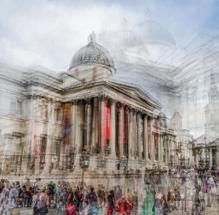
John Cavana ARPS (Headline Event Organiser) jcavana68@gmail.com
Mark Deutsch LRPS (Membership Secretary) mrkdeutsch@aol.com
Gill Dishart ARPS (Circles Secretary) gill@dishart.plus.com
Wendy Meagher LRPS (Exhibitions Lead) wmeagher@gmail.com
Paul Mitchell FRPS (Co-ordinator of The Stephen H Tyng Foundation) paul@pmd-design.co.uk
Eddie Morton ARPS (Exhibition Co-ordinator) eddiemorton@gmail.com
CO-OPTED
Robert Herringshaw ARPS (Exhibition Co-ordinator) robertherringshaw@me.com
Rollright
Andreas Klatt ARPS rpsva@klatt.co.uk
South West
Di Wilkins ARPS diwilkins@hotmail.co.uk
If you are interested in having or organising a Visual Art Sub-Group in your area, please contact:
Andreas Klatt ARPS visualart@rps.org
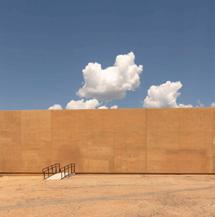

NO. 157 / 2020 / ISSUE 1
4. A View from the Chair
Andreas Klatt ARPS
4. Editor’s Comments
Linda Wevill FRPS
5. Common Components Glenys Garnett
Front Cover Image: Deep Blue Pool by Natalie Christensen
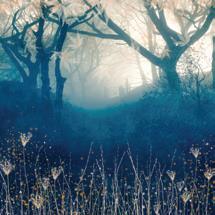
11. 4-O-Clock Shadow
Charlotte Gilliatt
16. Warped Topographies

Richard Earney FRPS
22. Urban Minimalism
Natalie Christensen
26.
Peter Stevens FRPS
GUEST EDITOR: Linda Wevill FRPS (lindawevill@gmail.com)
DESIGNER: Paul Mitchell FRPS (paul@pmd-design.co.uk)
Visual Art is The Magazine of the RPS Visual Art Group and is provided as part of the annual subscription of the Group. © 2020 All rights reserved on behalf of the authors. No part of this publication may be reproduced, stored in a retrieval system or transmitted in any form or by any means, electronic, mechanical, photocopying, recording, or otherwise without the written permission of the copyright holder. Requests for such permission must be addressed to the Editor. The Royal Photographic Society, RPS Visual Art Group and the Editor accept no liability for any misuse or breach of copyright by a contributor. The views expressed in this magazine do not necessarily reflect the policies of the Royal Photographic Society or of the Visual Art Group.
Printed by Henry Ling Ltd, The Dorset Press, Dorchester. DT1

Things are looking good. The 2019 print exhibition run was concluded last month in Doncaster, where staff at The Point noted ‘lots of people travelling to see the exhibition who a) had never visited before and b) had come specifically to see the exhibition’. Thanks to everyone involved at this fabulous venue.
The 2020 edition has attracted a record number of entries, giving the three selectors a bit of a headache, but they were able to make their decisions without bloodshed and looked pleased in the end. I think you, too, will be impressed with the result when you see it. Why
not come to the official opening at the Patchings Art Centre near Nottingham? If you go back a couple of pages you will find more information.
Meanwhile we continue to look into opportunities for joint ventures. Long Compton, base of our Rollright Group, is situated on the regional borders of Central, Thames Valley, South Wales and Western – an ideal location for any event appealing across administrative boundaries. So when yet another nearby region, East Midlands, approached us with an offer to stage one of their distinctions workshops in Long Compton we were only too happy to join in and promote the

It is my turn to be the Visual Art magazine guest editor again and I am delighted to put together another issue for you to read. I hope you enjoy the articles with a great variety of approach and style of photography that our contributors have agreed to share with us.
I enjoy experimenting in my photography so when I came across Glenys Garnett’s work on Facebook, I really admired her beautiful creativity. The landscape and nature figure highly in her work and capturing an image is the starting point as she is always looking for new ways to interpret what she sees.
Another experimental photographer is Richard Earney who created his fascinating images for his Fellowship panel. He started with polaroid film and used a variety of substances to create his final images which resemble aerial landscapes and satellite imagery.
London is such a vibrant place and we have two contrasting views of the capital to appreciate. Peter Stevens shows London through the eyes of a visitor, with their hectic schedule, rushing around the main tourist spots. After having seen so much in such a short space of time the memories become a blur and this is what Peter portrays in his F panel images.
I have admired the work of Charlotte Gilliatt for many years and here in her article she takes us through the East End of London at the dead of night looking for old gems in the back streets. Her mainly black and white images capture the atmosphere, mood and eeriness in scenes that can seem quite nondescript in the daytime but can be transformed into something quite magical at night.
Natalie Christensen is a psychotherapist and uses her images to ask questions of the world around her and to explore the world she inhabits. I am sure
day. Once again more detail can be found in the opening calendar listings.
We also had two well-attended residential events last year, Windsor in spring and Liverpool in autumn, to be followed this year by Stratford-upon-Avon in April and Buxton and the Peak District in October. Yet our meeting room usually stands empty until mid-afternoon. We could make this space available and have a separate distinctions event flanking the Visual Art programme.
Let’s hope for full 2020 vision.
Andreasyou will appreciate the strong colour, architectural shadows and geometry that figure repeatedly in her exciting and thought-provoking work.
Special thanks go to Paul Mitchell for, once again, designing a wonderful magazine for us all to read and thanks also to our contributors who have shared such a variety of images to inspire and motivate us.
Linda
I have practised photography from a young age, like most people carrying a camera to record my walks and outings. My career background is in IT and I have an honours degree in Graphic Communications so I have always maintained an interest in technology, especially in digital imaging and this has been my preferred medium for creating my art.
I have a love of the environment so interpreting the landscape and nature figures highly in my work, though I am interested in all types of photography and the visual arts. I would say about my work that I present the re-imagined landscape.
I live in Wakefield and I’m surrounded by the fantastic Yorkshire countryside and in close proximity to the Yorkshire Dales, North York Moors and the Peak District. No shortage

of subject matter for a landscape and nature photographer.


However, following a double bereavement in 2015 I struggled for over a year to get any satisfaction out of practising my photography. Visiting locations and returning with technically good images but lacking something. I realised I needed to change my approach, and perhaps fall in love with photography again. I chose to start working closer to home, be more structured and focussed and decided to work on some projects to kick start my creativity. I also decided to do more composite work which I have always enjoyed but for some reason had neglected.
I am influenced mostly by artists rather than photographers. I have an eclectic taste and often find myself motivated by a piece of art, period or style to develop a project. That might, for example, be the work of Victorian illustrative artists or Dutch and Spanish still life artists, but I am particularly drawn to impressionism and cubism and this has a great influence on me.
I don’t worry about whether the conditions are right or wrong for a particular location, this can be very liberating leaving me free to experiment and create something evocative.
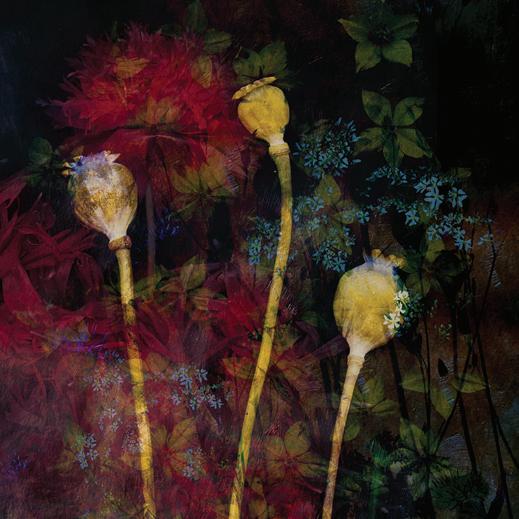
When you ‘get’ photography you start to see the world around you differently; texture, form, substance, detail, light, shade, everything becomes a potential subject and I call it ‘a way of seeing’.
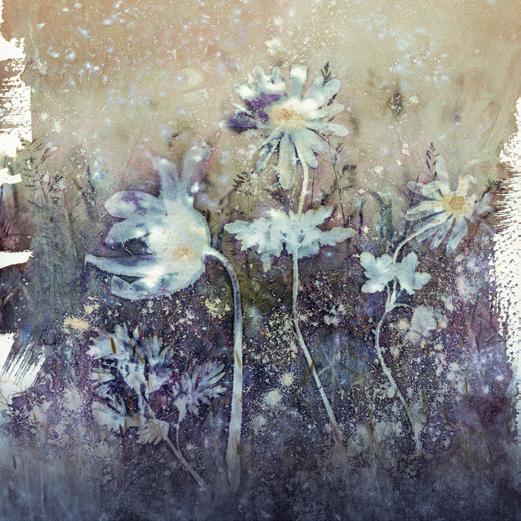
Capturing an image is just the starting point of the creative process for me. Photography allows me to be
connected with the landscape and by incorporating this into my art it gives me a creative outlet.
There are a staggering array of subjects around us and infinite possible ways to express oneself. So it is important to look and see each moment of capture as a unique piece of art.
The photographic image is always the core of my work, the camera is my main tool and I often make use of techniques like ICM (Intentional Camera Movement) and multiple exposures as there is randomness in the process that really appeals to me. I use 2 cameras, a Fuji XT2 and Canon 70D and along with proprietary lenses I have a small collection of vintage lenses to create effects like soft focus and interesting background bokeh.



I will sometimes use a flatbed scanner to capture objects for my compositions and this is generally known as scanography. I also use other alternative methods and mediums like cyanotypes.
A lot of my work involves postprocessing and Photoshop is my go to software for this as the work often contains many layers. This will include photographs, scanned objects like flowers, or scanned cyanotype prints. Some of my compositing is quite simple in technique and may consist of only a few layers combined occasionally with a texture. Others are more complex and quite graphic and abstract in nature but still incorporate the photographic image as the core concept.
When I create a new piece of work I will usually start with a blank canvas. Composites are built up using a number of layers and masking techniques in Photoshop. They sometimes only contain one main photographic image and this is built upon to create a new interpretation of a scene or location.
To do this I will use textures and brushes that have been created from other photographs like plants and these will be incorporated into the work.


I will often visualise a piece of work and then collect images at the location which I might later use in a composition. Whilst many of my pieces can stand alone they might have a common component within them that tie a series of images together. This might be a specific plant image created as a brush or a common background image, like a cyanotype.

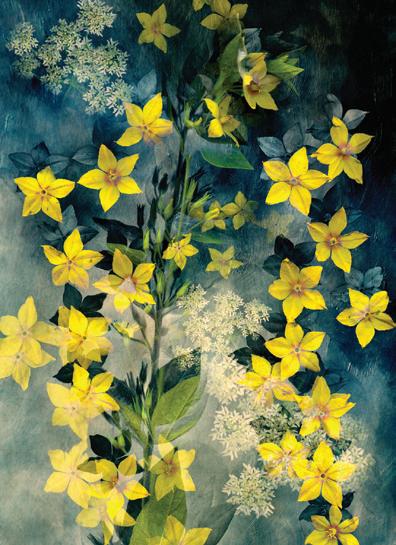
Experimentation is a key part of my creative process and I will continue to use the camera as my main tool.

If I had one piece of advice to give to anyone who wants to be more creative with their photography it would be to learn your camera inside out so that it doesn’t become a barrier to the creative process. Start by experimenting with incamera techniques like ICM and Multiple Exposure and try alternative methods of image capture, then take it from there. I don’t expect my work to appeal to everyone and I don’t have a problem with that. I’ve learnt over the last few years that I can only work creatively if I produce work to please me and if others enjoy it too then that’s a bonus and I’m happy with that.
www.ggcreativeimages.co.uk
I am constantly looking for new ways and ideas to develop my work and this continues to drive me as an artist. Every time I go out with my camera I feel like I am working with a blank canvas and looking for ways to interpret what I see.



Most photographers I know get up at silly o’clock to catch the beauty of sunrise… that special time of the day when the light and colour make for some wonderful imagery. Me, on the other hand... It’s about midnight, when others are off to slumber, it’s time to hit the road. I know where I’m going and how long it’s going to take me to get there. I also know that the pubs would’ve kicked out their patrons, who are now making their merry way home or tucked up in bed by the time I reach my destination, I’m hoping anyway....
My journey into photography started about 15 years ago when I was given a Nikon D80 for my birthday. Back then, like everyone else just starting out, I had no idea which genre or style I would fall into... I was just happily snapping away at anything from still life to architecture and landscapes, awestruck by beautiful images created by the ‘experts’. Then I discovered the work of artists such as Josef Sudek, Brassai and Bill Brand. I’ve always been fascinated by late nineteenth and early twentieth-century images of London, the dimly gas lit streets and alleyways, dark and full of mood… oh to step back in time... just for a moment, the sights, the sounds, the smells, the atmosphere. Finally, the penny dropped, there’s more to simply admiring a beautiful photograph...you have to feel it too. And these images spoke to me, stirring something within that to this day still has me hooked. Nowadays, I mainly shoot medium format film, although not exclusively. I find the beautiful imperfections and feel that can be achieved from the medium suit the emotion that I am trying to convey.
There’s something quite strange in what I do I guess... or so people tell me.
In this article, I’m going to concentrate on the East End of London. I know that there are still some old gems left to find if you know where to look... what is it that I’m looking for though? Atmosphere, mood, eeriness...in truth, the locations I seek need to possess all of these attributes or at least have potential but it’s getting harder and harder to find them.

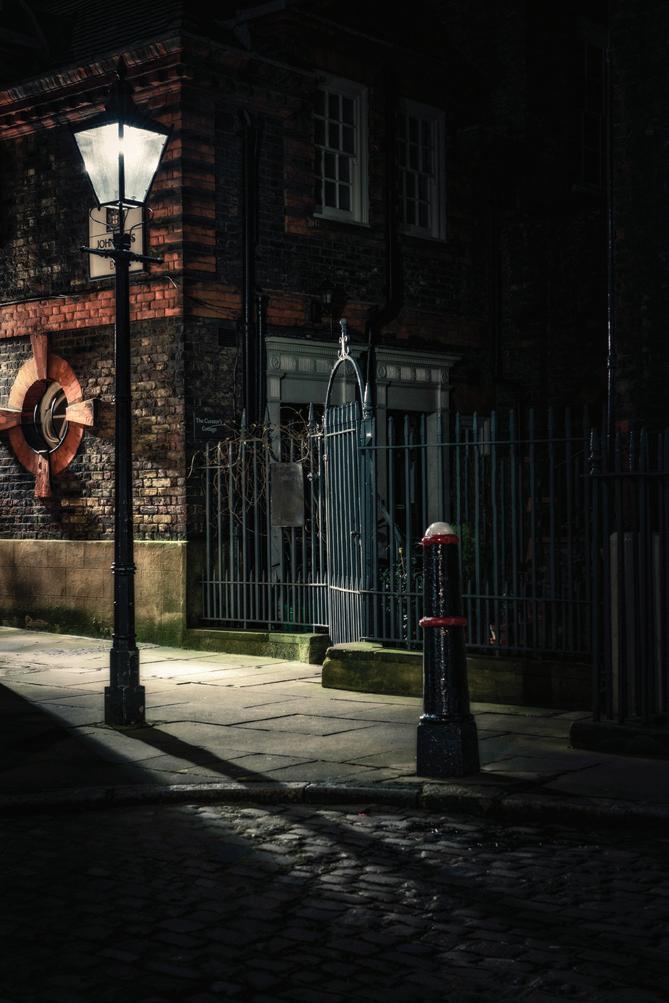
I say apprehensive rather than scared because as I tell my students who join me on my night photography workshops who often ask if I get scared…usually followed by “you wouldn’t get me doing it”. My response is one of nonchalance much to the surprise of my inquisitors... but then I remind myself that I am probably at a slight advantage to most in the fact that I was born and bred in the East End, which I tell myself gives
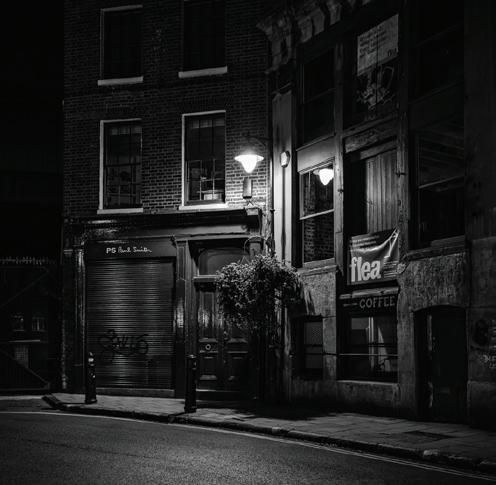
It’s the middle of the night, there doesn’t appear to be a soul around and I have the location to myself. I would be telling ‘porkies’ if I said I wasn’t a tad apprehensive about being a lone female in the middle of an urban area not exactly famed for its tranquillity… especially at night!
me an innate ability to be fully aware of my surroundings at all times... a sort of heightened awareness superpower! Who am I trying to kid... ‘get in, get on and get gone’... that’s my approach to urban photography at the dead of night... but it is those emotions of apprehension, fear and trepidation that, as it turns out… I try to convey in my night images. But what most see as foreboding, I see as the beautiful eeriness of silence, time and history.
It never ceases to amaze me how a seemingly, ordinary, nondescript street corner or alleyway that we wouldn’t even look at twice during the daytime, can be transformed into something quite magical at night. Although admittedly, the recent arrival of LED street lighting which seems to have replaced most of the sodium and nearly all of the treasured gaslights in London has made the job of controlling the mood somewhat more challenging, but I feel the right scene still has the potential to charm its viewer.
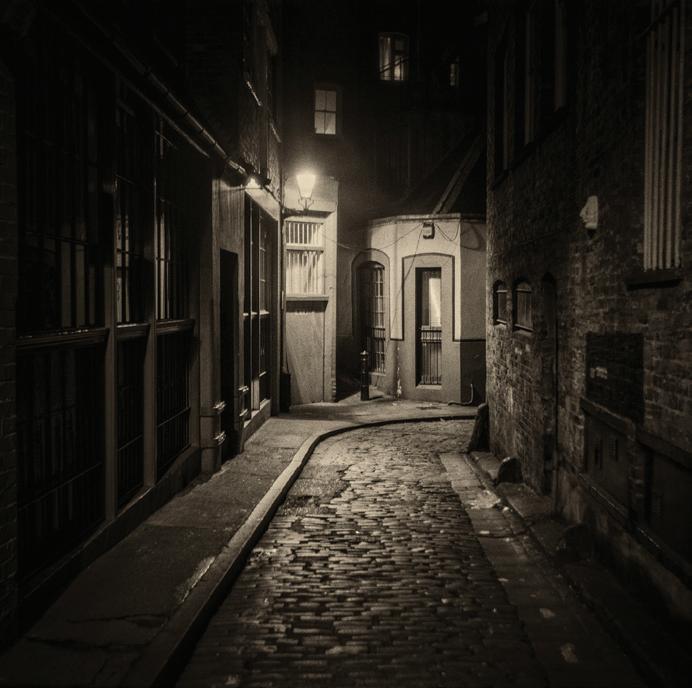

So I plod on, looking for that one place that will stop me in my tracks...I’ll know instantly if it possesses the ingredients that I’m looking for...the forgotten places, often reduced to just shadows of their former glory, hidden away behind the towering edifices of steel and glass before the developers reduce it to just a memory...an old photo of what went before, possibly one of my old photos… who knows? In 50 years’ time someone may look at my pictures and wonder about the scenes that once stood in these streets before, just as I do today.
I bet this place could tell some stories... and not all good either! I wonder of the people that have walked these cobbles, lived here, worked here through the centuries...the sights and the smells. My romantic notions having little or no resemblance to the truth of hardship.
Tonight has been successful, it even rained a little...just enough to make the cobbles glisten. I love the ‘old smoke’ at this time in the early hours...so peaceful. It won’t be long though until she starts to wake up, the familiar hum of traffic already starting to rumble and the recognizable sound of the bin truck, with its flashing yellow lights as it disrupts my composition just for a few moments. I’ll wait patiently...the men in their hi-viz jackets haven’t even noticed me lurking in the shadows... just one more shot...


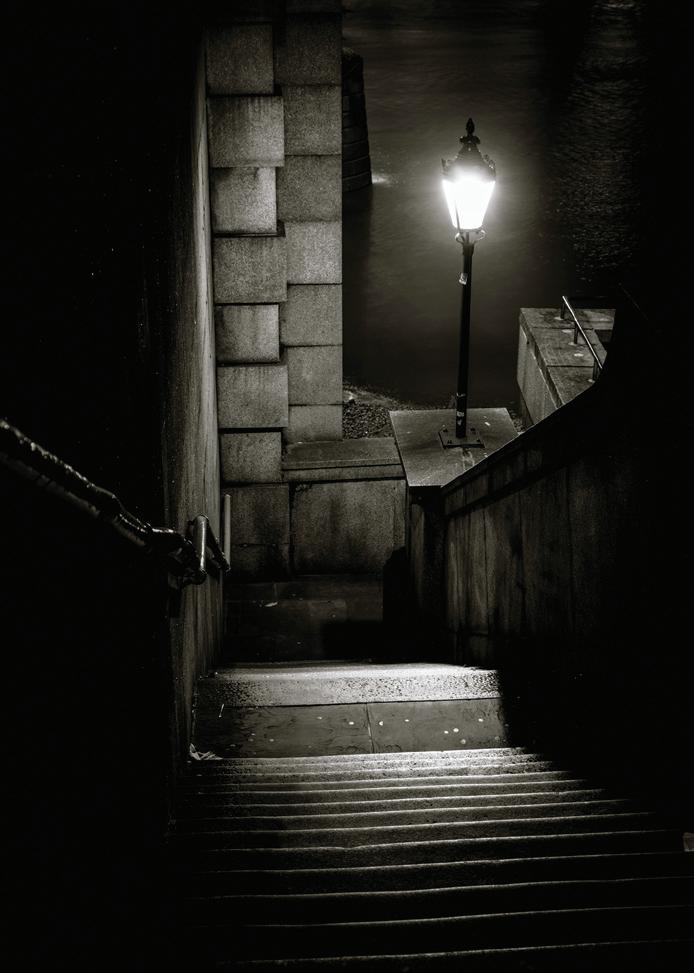
www.charlottegilliatt.com

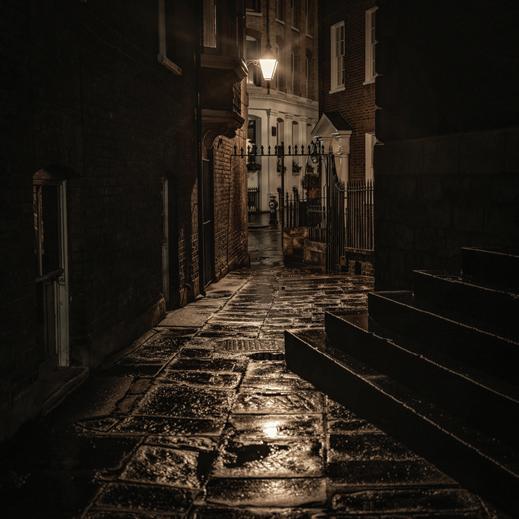

…and then, the birds are starting to sing and it’s getting light. As the shadows fade and the magic disappears, time to head home and call it a night, I think...

Nearly six years ago, I started to use a Polaroid SX-70 camera that I had bought from eBay. It was a beautiful object, covered in brown leather with a cream coloured metal frame. I used it with some Impossible Project film to take my first integral Polaroids.
Imagine my disappointment when the first image popped out. It was of nothing, a warm milky brown with a few dark blobs and some light streaks. At the bottom of the image there were three semi-circular blobs which looked a bit like the close up images that you see of the sun.
The image got buried under stuff on my desk. Every so often it would emerge and I’d remember the sense of disappointment. Each time I came across it, I looked more closely at this image and I was beginning to really like it. Following a 50th birthday trip to Iceland, I was unsure what to photograph next. I like to work in series, but it’s not always obvious when a series has started. And at that moment nothing seemed to be.
And then I came upon this failed Polaroid again and (still liking it) I started to investigate more about Polaroids and the Polaroid process.
My knowledge of Polaroid was limited to knowing that the founder of Apple, Steve Jobs, was a great admirer of Dr Edwin Land, the inventor of Polaroid I also knew, thanks to a stuffy press release from the Polaroid Corporation of America when the song Hey Ya! by Outkast was popular, that you were not supposed to ‘Shake it, shake it like a Polaroid picture”
My research explained the history of the Polaroid Corporation, how it had been this colossus of corporate America, inventing Instant photography. Then as digital photography began to rise, the company faltered and went into a downward spiral.

When it finally went into receivership, there was a small group of dismayed Polaroid fanatics, who couldn’t imagine life without Polaroid. One of these was Florian ‘Doc’ Kaps who mounted a rescue bid to buy what was left of Polaroid. Unfortunately the main factories had all been closed and dismantled. But there was one in Enschede, in the Netherlands, that was still rescuable.
The Doc bought the factory and with a small team of fans and ex-employees created the Impossible Project, named after Edwin Land’s maxim, “Don’t undertake a project unless it is manifestly important and nearly impossible.”
They had to reinvent the film from scratch as the materials were unavailable and in many cases the chemicals were banned for being too dangerous. In May 2017, they acquired the brand and intellectual property of the original Polaroid corporation and rebranded as Polaroid Originals.
What fascinated me was the development process of the film. All the colour dyes exist in the square of the Polaroid picture. When the image is made in the camera, film is ejected through rollers. The rollers squeeze development paste which lives in three pods in the white strip at the bottom of the classic Polaroid frame.
I realised that my three ‘suns’ in my Polaroid were actually these development pods ‘exploding’.
My project began in earnest when I manipulated the films after they ejected from the camera. Practice led to me having a measure of control over the process but I took it further and used various liquids, chemicals and even fire to create images. But at the heart of

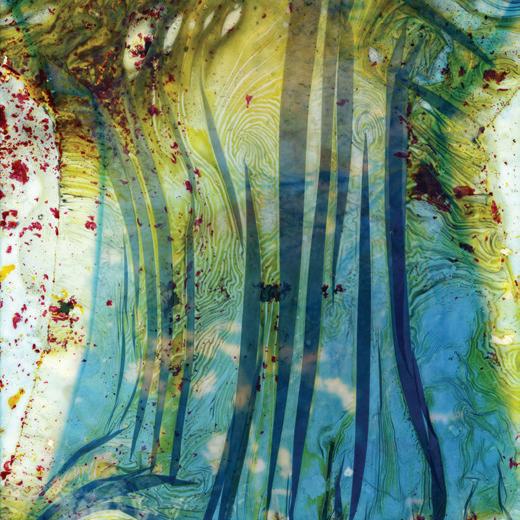
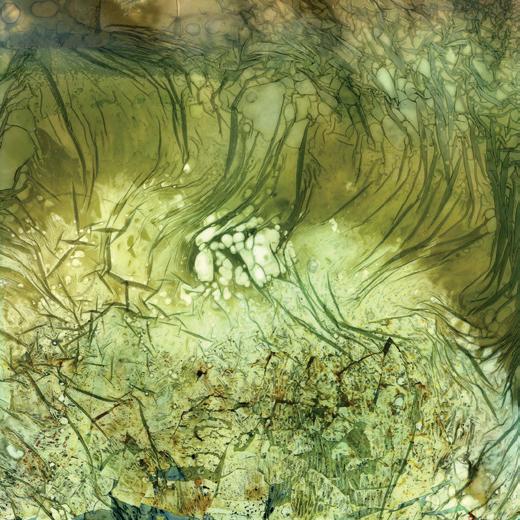

every image was a landscape image taken on a Polaroid camera.
The finished images resembled aerial landscapes and satellite imagery, revealing imaginary fractured lands, disrupted river flows, impenetrable forests, and glacial melts.
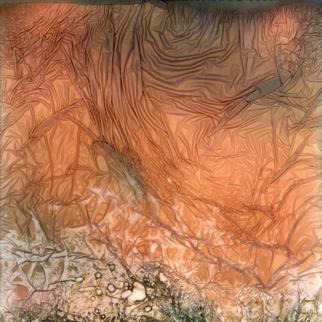

The project was tentatively named Warped Topographies. Then a photographer friend mentioned that these would make an interesting panel for the Fellowship, which I had been attempting to go for with another project.
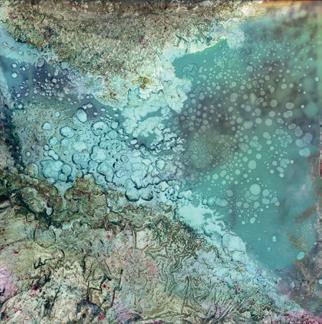

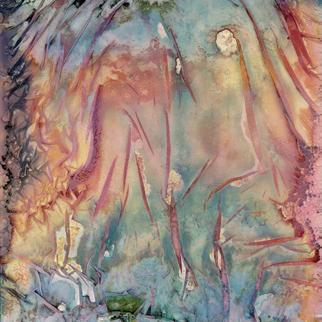
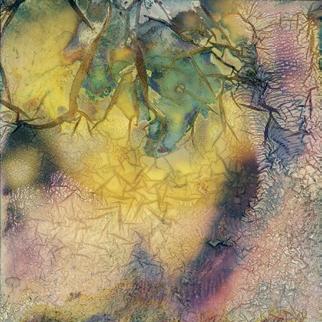

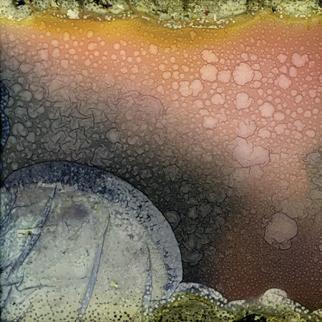
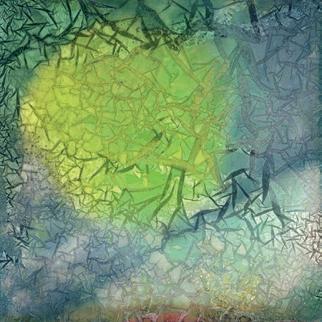
I collated about 25–30 images and I printed and mounted them in a faux Polaroid format, with dark grey mounts. Then I attended an RPS Assessment Day
in Bath. I’ve always enjoyed these days in the past and seeing the reactions of the Assessors helps to guide you on what they might be looking for. The feedback on my images was pretty positive. The grey mounts were a no-no however. Some of the conversation between the assessors was about presentation. One felt that printing them small, on glossy paper as if they were Polaroids was the way to go, whereas the other felt that larger and on matt fine art paper (which I had used) was the right way.
Ultimately it is up to the photographer to sift through the advice given. You can follow the advice given and pass, but equally there’s no formula for success, so you may not be being true to your work.
I knew that presenting them in the Polaroid style was not the way I wanted to go. The depth and texture within the images was such that a larger, more tactile presentation seemed right. Removing the Polaroid frame effect made them more abstract and avoided the cliché of the Polaroid frame.
The feedback received wasn’t all that clear, but it seemed they had liked where I was going, but it was presentational and sequencing flaws which let it down.
On the assessment panel was Paul Mitchell whom I’d met before on a
workshop in Southwold. He contacted me with a view to act as a mentor, which is not something I realised could happen. He explained the feedback for me. The images had been good, but the sequencing had been ‘thinking like an Associate panel’. With the other distinctions you tend to spend time balancing your panel (outward facing images on the inside, and vice versa). Paul felt that a panel based on colour theming might be more successful.
I experimented with small versions of the panel rearranging the shortlist of images. Paul and I would swap files and see if we liked the way it was going. He was careful to ensure that it was still my panel; he would guide rather than dictate. After a few weeks, I came up with a panel that I was happy with and Paul felt was coherent.

Paul’s other advice was to explain that with presentation it is really important ‘to give the assessors no reason to fail you’, even though it’s the images which matter most, if they are presented in an unsympathetic way then it shows a lack of care/respect for the images. The answer was to make them look and feel like luxury objects.

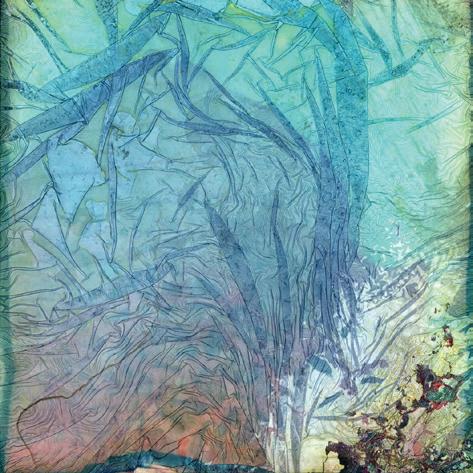


I resubmitted and received a referral. (where up to 4 images can be swapped and resubmitted). In this case it was just one of the images which was felt to be a bit too intense for the panel. I substituted it, resubmitted and was successful. However when you are recommended, you still have to wait for the Fellowship Board to approve the panel, after a couple of nervous weeks it was approved and I became a Fellow of the Royal Photographic Society.
Throughout the process I feel that I learned a huge amount, not only about gaining the Fellowship but about myself and my approach to photography. Here are just a few of those learnings.
1. I prefer to work in long-term projects
2. Never give up! There were times where I felt that I’d reached a dead end but a chance remark spurred me to change tack
3. Listen to others talking about your work, and the advice offered, you may hear something useful
4. Enjoy yourself. It is so easy to be obsessed about your work and feel every bit of tension surrounding the process

www.method.photo

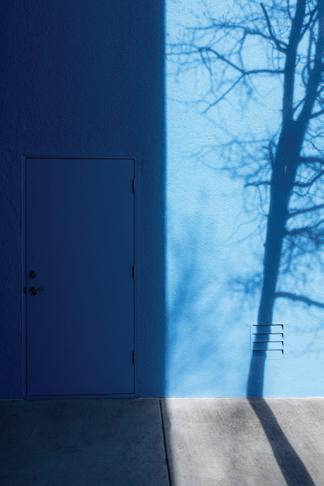
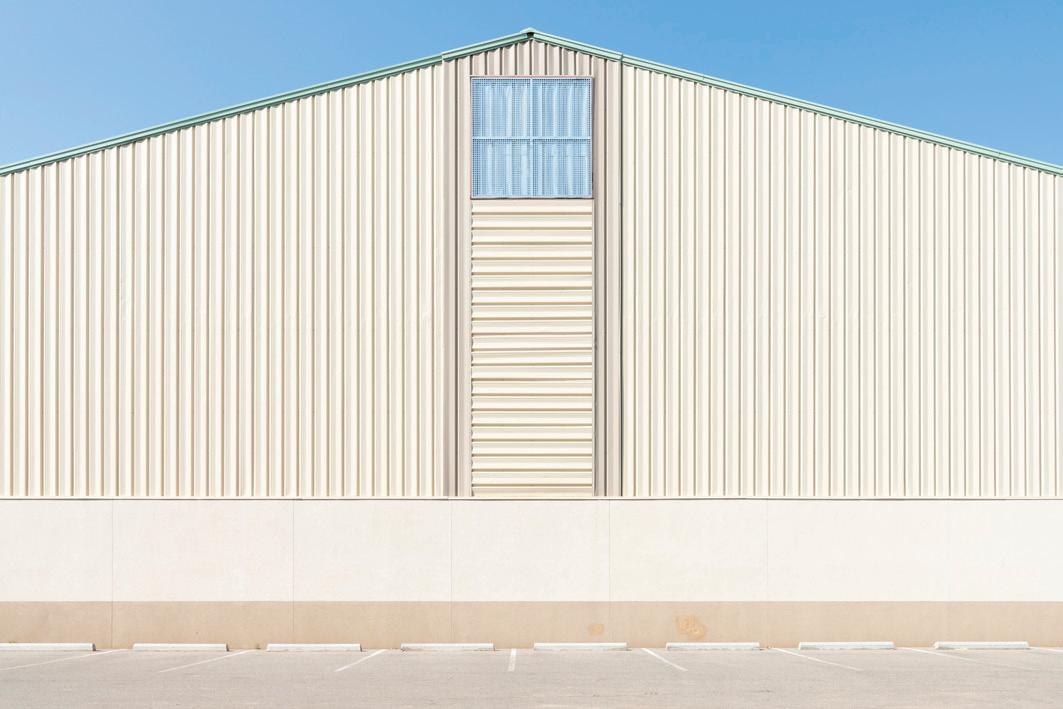
In 2014 I moved from the state of Kentucky to Santa Fe, New Mexico leaving my lifelong home and my 25-year career as a psychotherapist behind. While it was an exciting moment it was also a time of questioning and reflection. I found myself in a city with a carefully cultivated image at a time when I was letting go of my own ideas about self – there is a mystique about Santa Fe that has drawn people here for centuries. Like most who come here I was engaged by the more well-known aspects of Santa Fe, but also found that I was attracted to the spaces that many people passed by on their way to more esteemed landmarks.
I did not come here as an artist; I was taking photos simply as a way to make sense of my environment. Armed with
my iPhone I was documenting typical New Mexico scenes as a way to get to know my new home and share it with friends and family on social media. It was this rather ordinary process that was so integral to my becoming an artist. Instagram was the primary place I used for sharing my images and I quickly realized it was an invaluable resource where I could educate my eye and view an endless supply of high quality contemporary and fine art photography. I experimented with a variety of styles, but I was most consistently drawn to urban minimalism. Many of my architectural photographs shot around Santa Fe are simple and vibrant; informed by modern abstraction and color field painting. I use the camera and editing to make formal compositions, potent with angles and lines in an effort to challenge the city’s image as a place of monochromatic traditional architecture.

My eye was attracted to shooting the commonplace and commercial spaces of Santa Fe and other parts of New Mexico: parking lots, construction sites, parked cars, dumpsters and doorways in alleys behind shopping malls. I was drawn to certain types of scenes here without an articulated reason. As a therapist, I often look for patterns in people’s lives and explore the possibilities of the meaning of these patterns. I did the same with my own images. I wanted to understand as much as possible why, of all the possible subjects I could be shooting, did I keep coming back to these particular scenes?
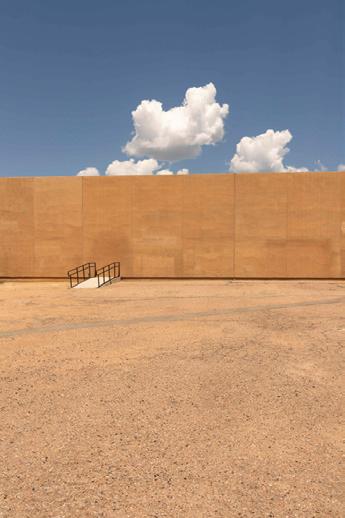
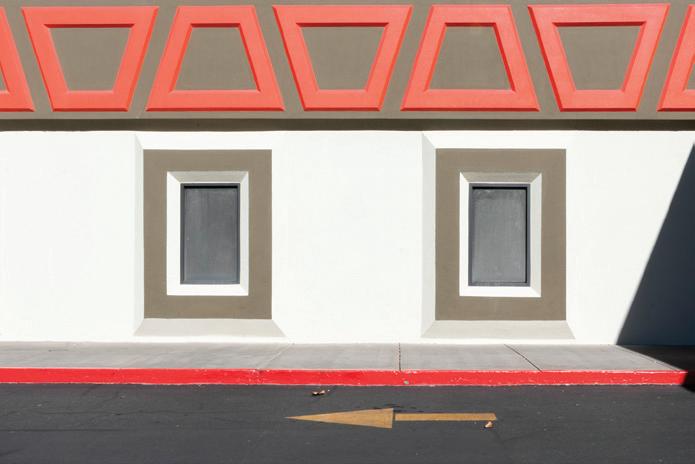
Strong color, geometry, swimming pools, and architectural shadows repeat in my work. In other series that developed from my initial approach, they’re paired with objects like trash bins and security cameras, often in degraded scenarios that I found in my wanderings. As my collection of images grew, I began thinking about a technique developed by the psychoanalyst Carl Jung called Active Imagination. I was looking for narratives in “found” forms and objects. According to Jung, “active imagination” involves translating the contents of one’s unconscious mind into images or stories. Jung linked active imagination with alchemy, as both strive for a transformation to wholeness from fragmented parts. This technique can bridge the personal unconscious with the “collective unconscious”—structures of the unconscious mind which are shared among all of us.
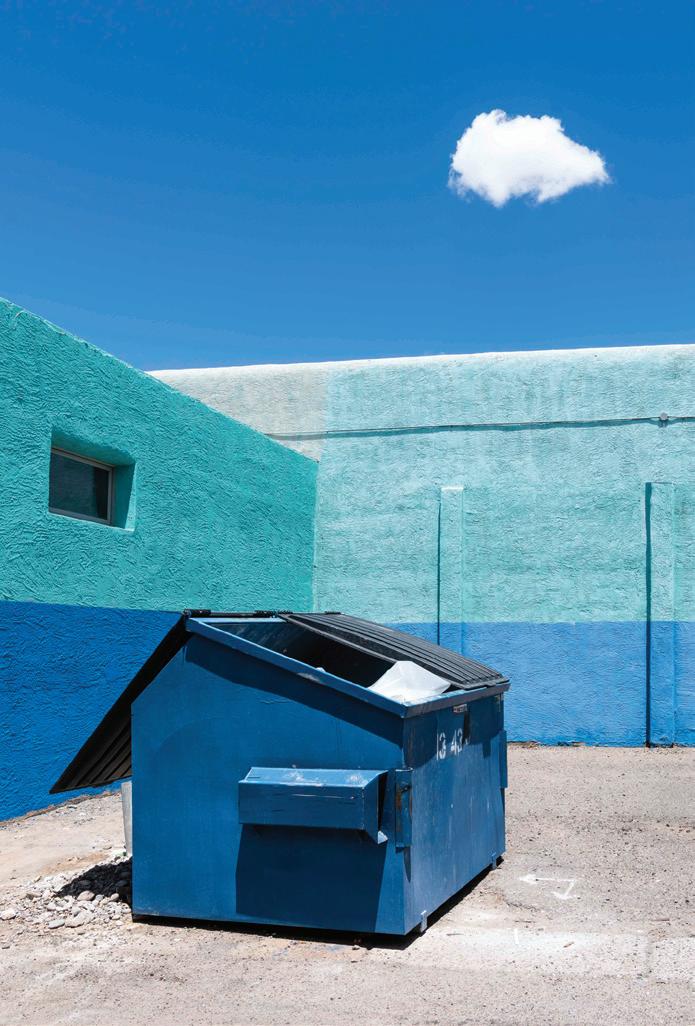
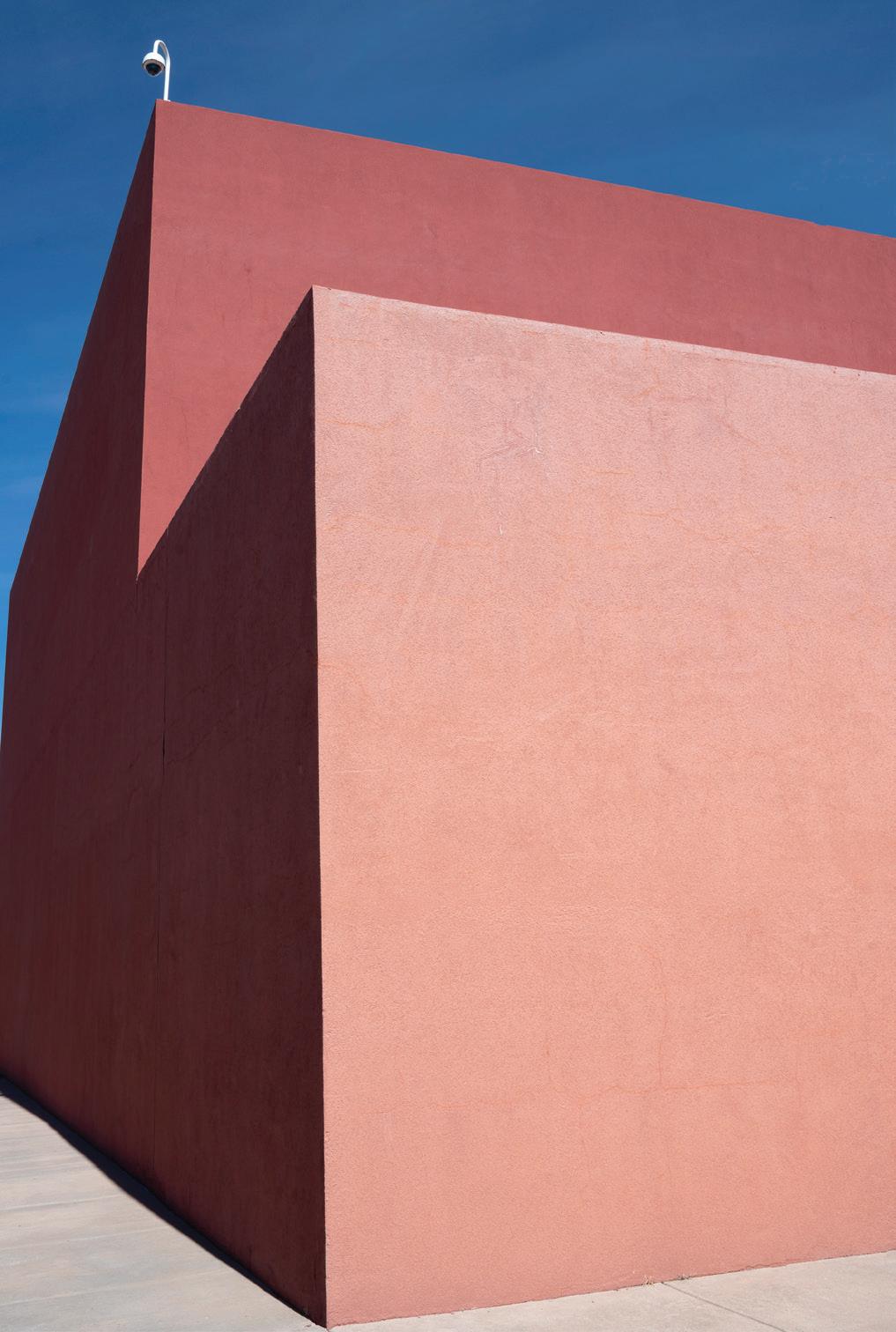
I see my main body of work - “The Deconstructed Self” - as an examination of psychological dream symbols. The images are a visual expression of loss, self-doubt, and woundedness. All of these things were facing me, and I was exploring them with my camera. These photographs are a visual expression of a desire to know something deeper about myself through the process of decontextualizing my environment and breaking it down into its essential elements.
Deeper psychological stories and a sense of mystery emerge when I see a scene such as a bridge blocked by a wall, an unreachable window, or a closed door. I want to explore my own phase of life, larger human dramas and feeling states through these places I happen upon.

As a psychotherapist, I learned the art of asking the question – in many ways these photographs are an extension of that work. The symbols and spaces in my images are an invitation to explore a rich world that is concealed from consciousness. And the scenes are an enticement to contemplate narratives that have no remarkable life or history yet tap into something deeply familiar to our experience; often disturbing, sometimes amusing… unquestionably present.
www.nataliechristensenphoto.com
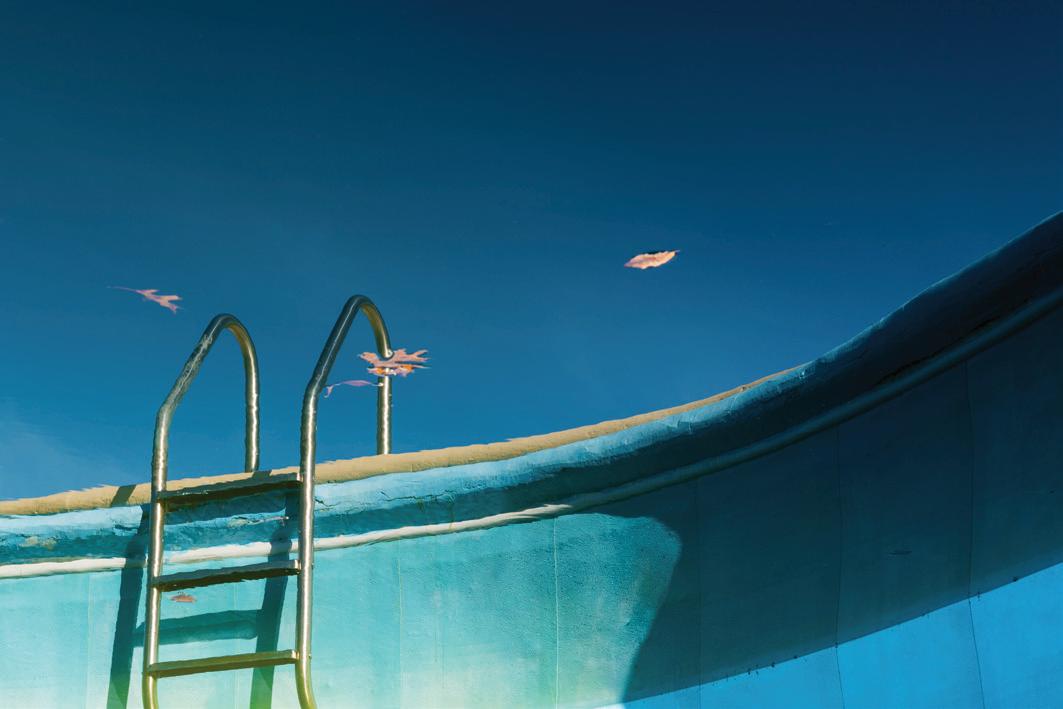

It happens to all of us. We’ve seen something and we’ve just stopped and said ‘WOW’. This happened to me when I first saw the Sydney opera house. How could I not stop and stare? Same thing with the Grand Canyon. It might not be something you see. It could be anything. Some music, a piece of Mozart, or something from Queen (Bohemian Rhapsody comes to mind). Or a piece of poetry or something somebody said.
It was an image of a tree by Sandra Bartocha that stopped me in my tracks some years back, and with hindsight probably set me on the path that eventually gained me a Fellowship in autumn 2018. I was struck by the unusual colours, the composition and the impressionist feel of the whole image. At the time I didn’t know how it was produced, although I now realise of course that it was a multiple exposure. My early, formative efforts at this type of image is shown below.

My primary interest in photography has always been landscape, and still is, although not exclusively. It’s hard to make landscape images that stand out; there are so many excellent photographers doing great work, and it’s tough to be original. I often think in terms of the 3 Cs – Composition (visual impact), Content (interesting subject matter) and Communication (is there a message). Composition and Content are the easier of the 3 Cs to deliver. Communication, conveying a message, is the most difficult, and particularly so for landscapes. But when it happens, in a real and understandable way, the image is instantly much stronger.
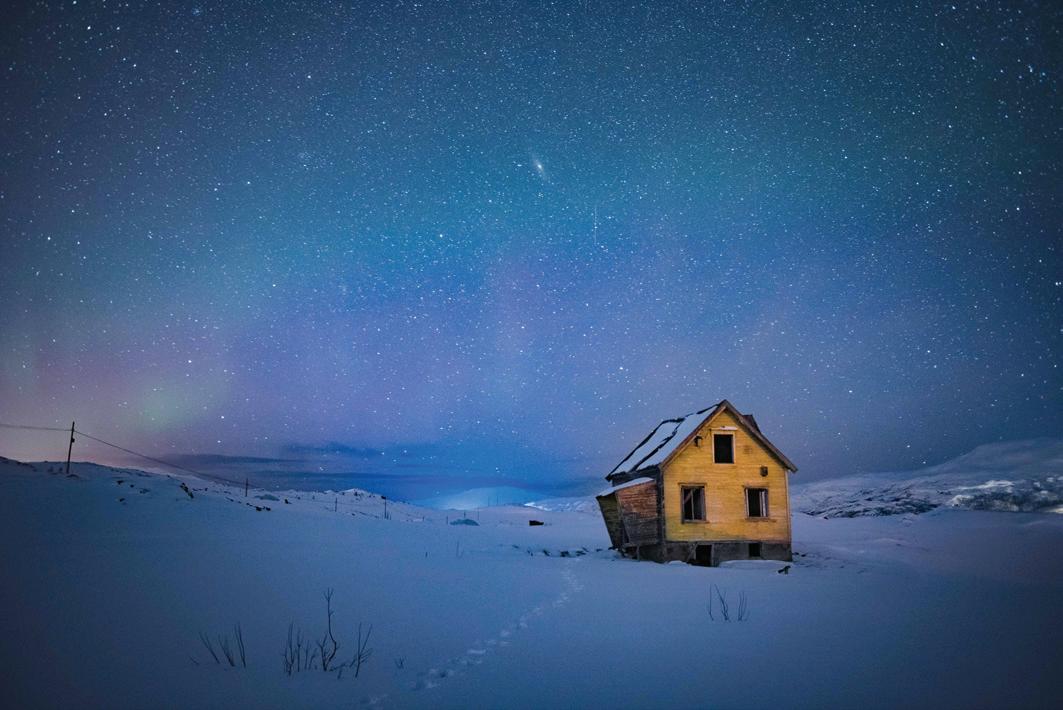
Let me illustrate with two examples that work for me. The image ‘Ageing’ was taken some years back on Brighton beach, and I could see the scene developing before my eyes. The young girl entering the water, with the old man exiting says so much about the energy of youth and the struggles of the older generation. Similarly, the image of the lone hut set against the the blue tinged snow, with the single line of footprints, easily conveys the message of ‘Cold and Alone’, especially with the universe of stars behind. This was taken earlier this year in the Lofoten Islands (1am, at -14C).



I think the message behind my ‘F’ panel played an important part in its success. The panel is titled ‘City Break’, and the core idea is to capture the experience of a visitor to London. Typically, a visitor has just a few days to see all the attractions and tries to cram in as much as they can in the limited time available. Inevitably the visitor’s memory becomes a blur, and the details of the attractions fade or are even forgotten. The panel is made up of London locations, captured using the multiple exposure technique, to reflect these blurred memories.
Although the panel came together very quickly, less than a year once I’d got going, I can trace its roots further back. It started with experimenting with trees, just like Sandra’s and others have done, but quickly moved onto other subjects, landscapes, architecture, street scenes. But it was when I started to include people in the scene that I became excited. I struck lucky with the image of the National Gallery. I had the idea in mind, but I was still very much in the experimentation stage. However, this image won the Sony Award in the first Masters of Print Exhibition and I just felt maybe I was onto something. I started to make trips to other London attractions, with mixed success initially but gradually I began to recognise the subjects that would work as a multiple exposure, and also those that would not.
I also went through a major learning curve as I gained experience in creating multiple exposures. I experimented for some time taking them ‘in camera’ but after a while found this didn’t work for me.
For example, just one of the problems I found was that unwanted items would appear in the image, either because I’d not seen them, or I just couldn’t avoid them. And this would ruin the whole image. My preferred approach now is to take multiple single images and combine them in Photoshop. This way is far more flexible. It is possible to change the opacity of each layer, use different blending modes, turn layers on and off, and particularly use layer masks to selectively include or exclude parts of individual images. This way allows the images to be constructed with much greater precision, although at the cost of significant time on the computer and the consumption of large amounts of disc space.
Somewhere along this journey the third C (communication), the message, became clear. I felt I was capturing the experience of a visitor to London, rushing around the attractions. Each image that makes up the multiple exposure is sharp, just as the visitor would have seen it, but the overall effect is blurred, just like the visitor’s memory. This clarification gave me the Statement of intent for the panel, and a very clear direction for the subsequent picture taking.

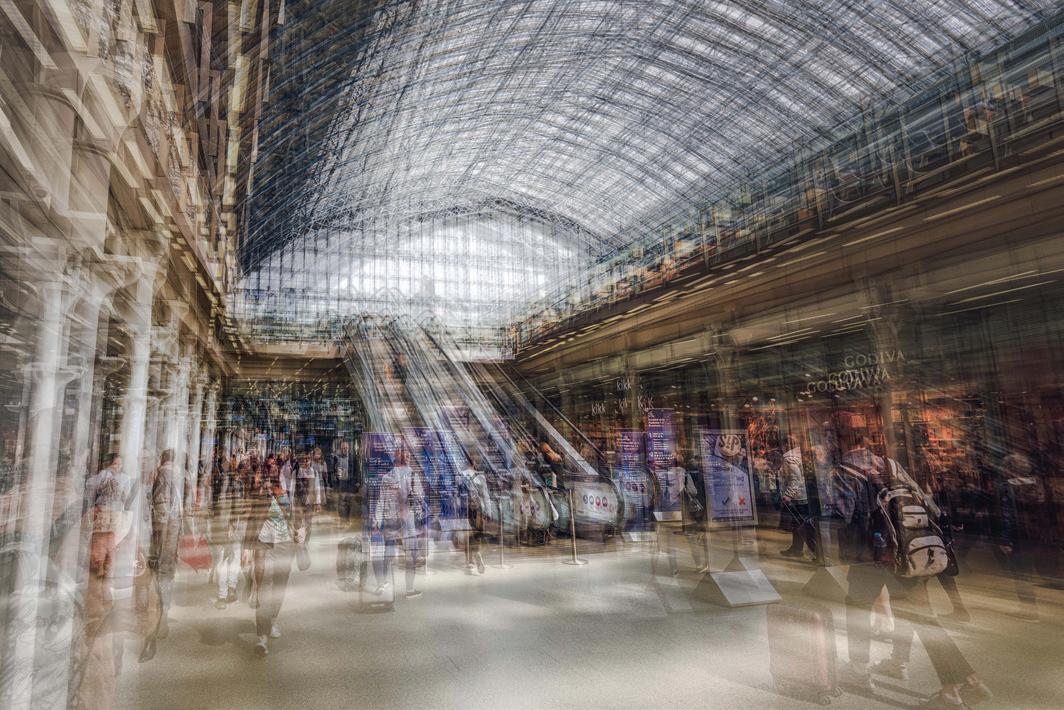
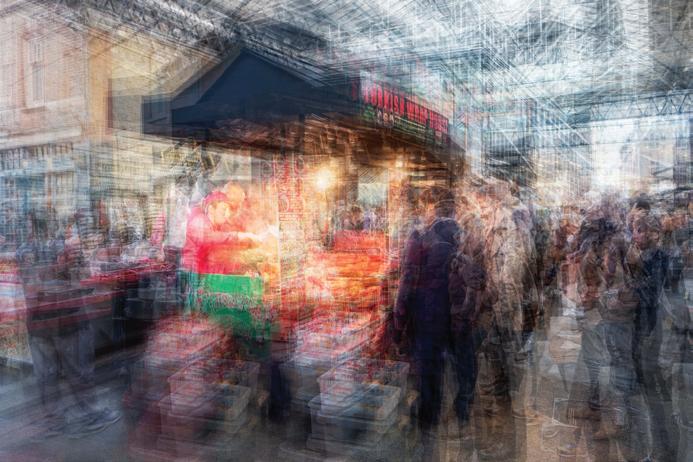
I am obviously delighted to have gained the Fellowship. It has been an achievement I am proud of, but also a journey that may have changed my approach to photography – we’ll have to see.
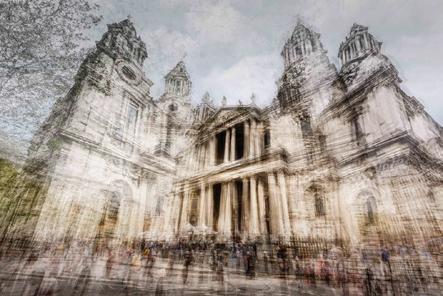
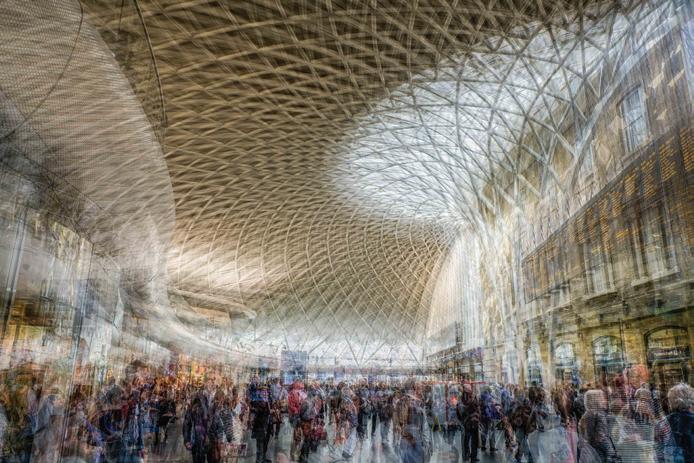
The full panel can be seen on my web site www.peterstevensphotography.co.uk

Members’ Day
11 July 2020
10:30 - 16:00
The Dolphin Hotel, Station Road, Bovey Tracey, Devon, United Kingdom, TQ13 9AL
Another day for members to show their work. Please bring up to 10 prints for discussion purposes, but still come along if you would prefer to observe. This is an ideal opportunity to share your images but also to meet other visual art enthusiasts in an informal friendly atmosphere and all are welcome. To book your place, please contact Di Wilkins ARPS.
Event organiser: Di Wilkins ARPS (diwilkins@hotmail.co.uk)
VAG Member £3, RPS Member £5, Non RPS Member £8
See more at: https://tinyurl.com/uz4mq9y
Rollright Visual Art Group
Summer Meeting
22 August 2019
10:00 - 16:00
Village Hall, High Street, Long Compton, Warks, United Kingdom, CV36 5JS
Another opportunity for you to show a selection of your work and offer it for general discussion in a friendly and relaxed atmosphere.
RPS/Non RPS Member £8, Ploughman’s Lunch £5
Event organiser: Andreas Klatt ARPS (rpsva@klatt.co.uk)
Visual Art Group
Autumn Weekend
2 October - 5 October 2020
The Palace Hotel, Palace Road, Buxton, United Kingdom, SK17 6AG
This autumn our residential weekend will find us in Buxton, gateway to the Peak District. Amongst other speakers Robert Harvey ARPS will return by popular request with a talk and a workshop on photographing England’s national parks of which the Peak District was the first. This event will become bookable at the end of May.
Event organiser: Andreas Klatt ARPS (visualart@rps.org)
Get even better value from your membership of the Visual Art Group: join a circle. Email circles are free to join, while print circles will cost you no more than postage. Meet new people keen to share their experience, to ask questions and to comment on your photographs. Get a different angle on your work from people who are neither fellow club members, nor your family! Members range from new recruits to very experienced photographers, from people who just want to enjoy their photography with new friends, to people working towards distinctions.
There are print and email circles and we’d welcome a few more members. Join a circle.
To join or ask for more information, just email Gill Dishart ARPS (Gill@dishart.plus.com)
https://rps.org/groups/visual-art/